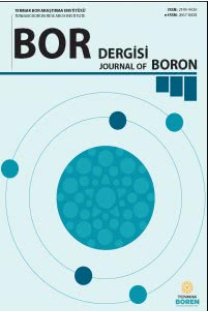Investigation of mechanical and tribological characteristics of Ni-B coatings deposited on steel
Hardness, Ni-B electrodeposited coating, wear mechanism,
___
- [1] Dossett, J., & Totten, G. E. (Eds.). (2013). Steel Heat Treating Fundamentals and Processes (Vol. 4A), ASM International. https://doi.org/10.31399/asm. hb.v04a.9781627081658.
- [2] Wang, Y. M., Cheng, S., Wei, Q. M., Ma, E., Nieh, T G., & Hamza, A. (2004). Effects of annealing and impuri¬ties on tensile properties of electrodeposited nanocrys¬talline Ni. Scripta Materialia, 51(11), 1023-1028.
- [3] Brooman, E. W. (2004). Wear behavior of environmen-tally acceptable alternatives to chromium coatings: Nickelbased candidates, Metal Finishing, 102(9), 75¬82.
- [4] Krishnaveni, K., Narayanan, T. S., & Seshadri, S. K. (2005). Electroless Ni-B coatings: preparation and evaluation of hardness and wear resistance. Surface and Coatings Technology, 190(1), 115-121.
- [5] Pal, S., Sarkar, R., & Jayaram, V. (2018). Character-ization of thermal stability and high-temperature tribo- logical behavior of electroless Ni-B coating. Metallurgi-cal and Materials Transactions A, 49(8), 3217-3236.
- [6] Bhushan, B. (2000). Modern Tribology Handbook, Two Volume Set (1st ed.). CRC Press. https://doi. org/10.1201/9780849377877.
- [7] Ahmadiyeh, S., Rasooli, A., & Hosseini, M. G. (2020). Preparation of pulse electrodeposited Ni-B coating with RSM software and evaluation of its microhard¬ness and electrochemical behavior. Metallurgical and Materials Transactions A, 1-13.
- [8] Zhang, Z., Jiang, Y, Huang, L., Nie, X., & Liu, G. (2017) . Experiment study of laser thermal enhanced electrochemical deposition. Microsystem Technolo¬gies, 23(6), 1695-1701.
- [9] Xiao, Q. L., Shao, S. Y, Shao, J. D., & Fan, X. Z. (2009). Influences of oxygen partial pressure and deposition rate on residual stress of ySz thin films. Chi¬nese Journal of Lasers, 36, 1195-1199.
- [10] Teppa, O., & Taskinen, P (1993). Thermodynamic as-sessment of Ni-B phase diagram. Materials Science and Technology, 9(3), 205-212.
- [11] Delaunois, F., & Lienard, P. (2002). Heat treatments for electroless nickel-boron plating on aluminium alloys. Surface and Coatings Technology, 160(2-3), 239-248.
- [12] Patterson, A. L. (1939). The Scherrer formula for X-ray particle size determination. Physical Review, 56(10), 978-982.
- [13] Liu, B., Wang, B., & Gu, J. (2019). Effect of ammo¬nia addition on microstructure and wear performance of carbonitrided high carbon bearing steel AISI 52100. Surface and Coatings Technology, 361, 112-118.
- [14] Sahoo, P, & Das, S. K. (2011). Tribology of electroless nickel coatings-a review. Materials & Design, 32(4), 1760-1775.
- [15] Kanta, A. F., Vitry, V., & Delaunois, F. (2009). Wear and corrosion resistance behaviours of autocatalytic electroless plating. Journal of Alloys and Compounds, 486(1-2), L21-L23.
- [16] Cao, Z. Q., Sun, Y, & Sun, H. J. (2012). Effect of grain size on oxidation behavior of Fe-40Ni-15Cr alloys. High Temperature Materials and Processes, 31(1), 83¬87.
- [17] Chen, L. H., & Rigney, D. A. (1990). Adhesion theories of transfer and wear during sliding of metals. Wear, 136(2), 223-235.
- [18] Holmberg, K., & Matthews, A. (2009). Coatings tribol¬ogy: Properties, mechanisms, techniques and appli¬cations in surface engineering. Elsevier. https://doi. org/10.1088/0022-3727/40/18/S07.
- [19] Pal, S., & Jayaram, V. (2018). Effect of microstructure on the hardness and dry sliding behavior of electroless Ni-B coating. Materialia, 4, 47-64.
- ISSN: 2149-9020
- Yayın Aralığı: 4
- Başlangıç: 2016
- Yayıncı: TENMAK Bor Araştırma Enstitüsü
Fatma Burcu ALP, Mehmet GÖNEN, Sevdiye SAVRİK, Devrim BALKÖSE
Gülten ÖZÇAYAN, Yüksel ŞAHİN, A. Ernur SÖYLEMEZ, M. Elif ÜNSAL
Ni-B katalizörünün hidrojen üretiminde yanıt yüzey yöntemi ile optimizasyonu
Atilla EVCİN, Süleyman AKPINAR
Fatih DOĞAN, Erhan DURU, Mehmet UYSAL, Hatem AKBULUT, Serdar ASLAN
